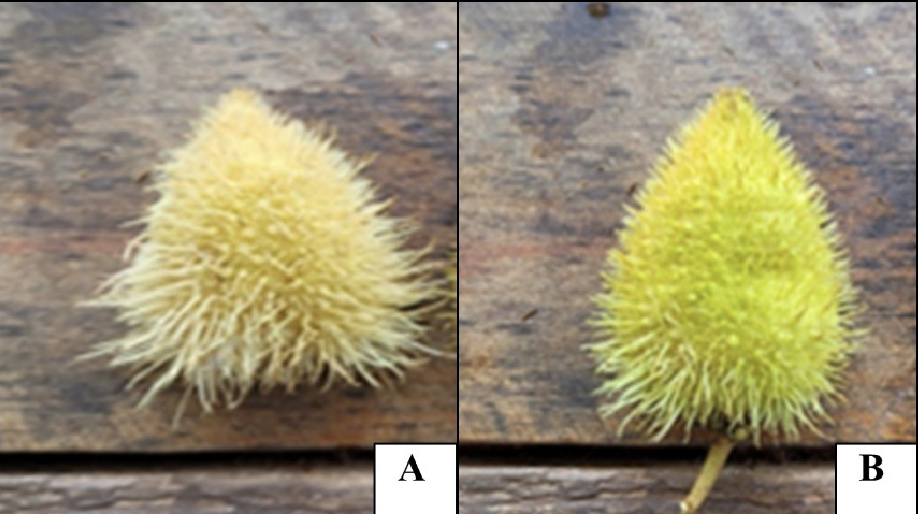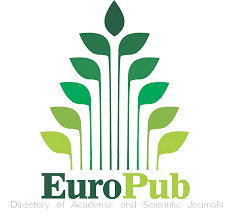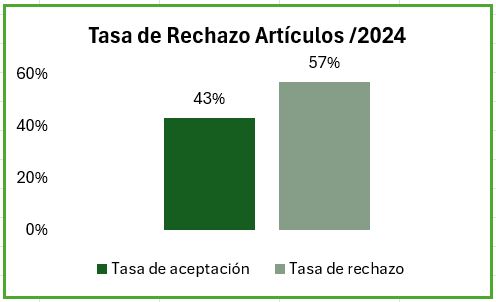Phenotypic and agronomic attributes of two achiote (Bixa orellana L.) cultivars in Madre de Dios, Peru
DOI:
https://doi.org/10.54753/blc.v14i1.2125Keywords:
Iñapari, morphology, phenology, yieldAbstract
Bixa orellana is one of the most produced and exported dyes in Peru. However, there are limitations for its correct production and use, for example, the use of improved varieties. In this sense, this work aimed to measure the phenotypic and agronomic characteristics of the Sensient and Embrapa 37 cultivars in the department of Madre de Dios. We found that for both there are two moments of flowering and fruiting (and harvest). First flowering: January-February (Sensient)/February-March (Embrapa 37). First fruiting: February-March (Sensient)/March-April (Embrapa 37). Second flowering: June-July (Sensient)/July-August (Embrapa 37). Second fruit set: July-August (Sensient)/August-September (Embrapa 37). The phenotypic characteristics differed only in the color of the mature leaf and midrib, which for Sensient were dark green, while for Embrapa 37 they were light green. In the fruit characteristics we noticed some differences, in fact, in Sensient the capsule had an ovoid shape with an obtuse apex and a rounded base, while, for the same characteristics, for Embrapa 37 an elongated capsule with rounded apex and flat base was recorded. In general, Sensient showed better growth in terms of plant height and stem diameter as well as better values for number of panicles/plant and 100-seed weight which finally resulted in higher yield (2.85 t/ha of grain). In conclusion, Sensient showed better adaptation and yield than Embrapa 37.References
Albújar, E. (2019). Anuario Estadístico de la Producción Agrícola 2018. Ministerio de Desarrollo Agrario. 371 pp. Encontrado en: https://siea.midagri.gob.pe/portal/publicacion/boletines-anuales/4-agricola . Revisado el 23 de julio del 2023.
Akshatha, V., Giridhar, P. y Ravishankar, G. A. (2011). Journal of Horticultural Science and Biotechnology, 86(4), 319-324. https://doi.org/10.1080/14620316.2011.11512767
Arce, J. (1984). Caracterizacion de 81 plantas de achiote (Bixa orellana L.) de la coleccion del CATIE procedentes de honduras y Guatemala, y propagacion vegetativa por estacas. [ Tesis de maestría, Universidad de Costa Rica]. Repositorio Institucional de Universidade Federal da Grande Dourados]. https://repositorio.catie.ac.cr/handle/11554/4570
Arce, J. (1999). Descriptores para la selección de variedades de achiote. En El Achiote (Bixa orellana L.): cultivo promisorio para el trópico (pp. 43-48). Earth. http://usi.earth.ac.cr/glas/sp/90019483.pdf
Bindyalaxmi, K., Kumaran, K., Divya, M. P., Vennila, S., Raveendran, M., Radha, P. y Priyanka, V. (2022) . Pigment and oil content estimation in seeds of Bixa orellana L. The pharma innovation, 11(8), 419–423. https://doi.org/10.22271/tpi.2022.v11.i8e.14679
Bonilla, J. (2009) . Manual del Cultivo de Achiote (p. 7). Encontrado en: https://cenida.una.edu.ni/relectronicos/RENF01B715mc.pdf. Revisado el 3 de agosto del 2023.
Borjas-Ventura,R., Bello-Medina, N., Bello-Amez, S., Alvarado-Huaman, L., Rabaza-Fernandez, D., Tapia Y Figueroa, L., Castro-Cepero, V. y Julca-Otiniano, A. (2022) . Differentiated Cadmium Uptake and its effect on the physiology of six cacao genotypes (Theobroma cacao L.) in San Ramón, Central Peruvian Jungle. Tropical and Subtropical Agroecosystems, 25(3). http://dx.doi.org/10.56369/tsaes.4000
Borjas-Ventura, R., Andía, E., Alarcón-Águila,G., Estelita,S. y Julca-Otiniano, A. (2018). Crecimiento y calidad de plántulas de café (Coffea arabica) injertadas sobre Coffea canephora frente a nematodos en vivero. Journal of the Selva Andina Biosphere Research 6(2), 28-41. http://www.scielo.org.bo/scielo.php?script=sci_arttext&pid=S2308-38592018000200002
Bouvier,F., Dogbo,O. y Camara,B. (2016). Biosynthesis of the Food and Cosmetic Plant Pigment Bixin (Annatto). Science, 300(5628), 2089-91. doi: 10.1126/science.1085162.
Dequigiovanni, G., Ferreira, S., Alves-Pereira, A., Gomez,E., Picanço-Rodrigues, D., Roland, C., Gepts,P. y Veasy,E. (2018) . Highly structured genetic diversity of Bixa orellana var. urucurana, the wild ancestor of annatto, in Brazilian Amazonia. PLOS ONE 13(6), e0198593. https://doi.org/10.1371/journal.pone.0198593
De Swaef, T., De Schepper, V., Vandegehuchte, M. y Steppe, K. (2015). Stem diameter variations as a versatile research tool in ecophysiology. Tree Physiology, 35(10), 1047–1061. https://doi.org/10.1093/treephys/tpv080
Dos Santos, E.J., Lourenzani, W.L. y Lourenzani, A.E. (2018) History and ascension of annatto cultivation in the microregion of Dracena, Sao Paulo State. Brazilian Journal of Biosystems Engineering ,12(1), 29-39. https://doi.org/10.18011/bioeng2018v12n1p29-39
Duque-Y Duque ,E. , Aguirre-Saltos, M. y Tamayo-Domínguez,A. (2022) Caracterización Fenotípica, Genotípica y ensayos de autopolinización en 18 accesiones de Achiote (Bixa orellana l.) en Costa Rica. Agronomía Costarricense, 46(2), 117-134. https://dx.doi.org/10.15517/rac.v46i2.52052.
GESTIÓN. (2015). Producción de achiote en Perú se reduce y requiere promoción para reactivarla. Gestión. Encontrado en: https://gestion.pe/economia/produccion-achiote-peru-reduce-requiere-promocion-reactivarla-107025-noticia/. Revisado el 26 de agosto del 2023.
He, L., Jing, N. y Yu, Q. (2020). Impacts of climate change and crop management practices on soybean phenology changes in China. Science of the total Environment, 707 (135638), 135638. https://doi.org/10.1016/j.scitotenv.2019.135638.
Igboabuchi, N., Echereme, C. y Ekwealor, K. (2018). Phenology in Plants: Concepts and Uses. International Journal of Science and Research Methodology, 11(1): 8-24. https://ijsrm.humanjournals.com/wp-content/uploads/2018/12/2.Igboabuchi-N.A.-Echereme-C.B.-Ekwealor-K.U..pdf
INIA. (2009). Accesiones promisorias; Banco de germoplasma de la SUDIRGEB – Instituto Nacional de Innovación Agraria . Volumen 1. Repositorio Institucional INIA. Encontrado en : http://repositorio.inia.gob.pe/bitstream/20.500.12955/104/3/INIA-Acciones...Banco_de_Germoplasma.pdf. .Revisado el 4 de agosto del 2023.
Inuma,M. (2022) . Variabilidad Genética mediante caracterización morfológica en achiote (Bixa orellana L.) para fines de mejoramiento. Zungarococha. San Juan. 2020 [Tesis de pregrado]. Universidad Nacional de la Amazonia Peruana. https://repositorio.unapiquitos.edu.pe/bitstream/handle/20.500.12737/8843/Marcelo_Tesis_Titulo_2022.pdf?sequence=1&isAllowed=y
Jayakumar, J., Rajkumar, P., Sudha, P., Kumaran, K., Gurusamy, K y Subramanian,P. (2023). Morphological Assessment of Annatto (Bixa orellana L.) Fruit and Seed for the Development of Mechanical Seed Separator. Agricultural Science Digest, 43(3), 396-401. doi: 10.18805/ag.D-5731
Julca Otiniano, A., Andia Alarcón, E., Estelita Castro, S. y Borjas Ventura, R. (2018). Comportamiento de Coffea arabica L. injertadas sobre Coffea canephora en presencia de nemátodos en vivero. Revista de Investigaciones Altoandinas, 20(3), 267-280. https://dx.doi.org/10.18271/ria.2018.391
Kala, S., Kumaran, K., Meena, H. R. y Singh, K. (2015). Edible Dye for the Future: Annatto (Bixa orellana L.). Popular Kheti, 3(3), pp. 214-218 . https://www.researchgate.net/profile/Samadharmam-Kala/publication/303735928_Edible_Dye_for_the_Future_Bixa_orellana_L/links/574fe2de08aebb988044fba9/Edible-Dye-for-the-Future-Bixa-orellana-L.pdf
Kumari S. y Kumaran, K. (2022). Evaluation of growth performance of Bixa orellana L. progenies under nursery conditions. Madras Agricultural Journal, 109. https://doi.org/10.29321/maj.10.000649
Maués-Venturieri, M. y Venturieri, G. (1992). I Reuniao tecnico-cientifica sobre o melhoramento genetico do urucuzeiro. Belém: Embrapa – CPATU. 108 pp. Encontrado en https://www.alice.cnptia.embrapa.br/bitstream/doc/1094188/1/CPATUDoc69p8291.pdf. Revisado el 3 de julio del 2023.
MIDAGRI. (2022). Boletín - Compendio Anual de “Producción Agrícola”: Cuadros en Excel del anuario "Producción Agrícola" 2021. Encontrado en: https://www.gob.pe/institucion/midagri/informes-publicaciones/2730325-compendio-anual-de-produccion-agricola. Revisado el 5 de agosto del 2023.
Moreira, P. A., Lins, J., Dequigiovanni, G., Veasey, E. A. y Clement, C. R. (2015) . The Domestication of Annatto (Bixa orellana) from Bixa urucurana in Amazonia. Economic Botany, 69(2), 127–135. https://doi.org/10.1007/s12231-015-9304-0
Nolasco-Chumpitaz, J., Ccoyllo-llacsa, P., Koc-Sanchez, G. y Medina-Morales, P. (2020). Collection and morphological characterization of 149 accessions of achiote ( Bixa orellana L .) from seven departments in Perú. Peruvian Journal of Agronomy, 4(3), 93-103. https://doi.org/10.21704/pja.v4i3.1341
Oliveira, S. do S. do C., Sarmento, E. dos S., Marinho, V. H., Pereira, R. R., Fonseca, L. P. y Ferreira, I. M. (2022). Green extraction of annatto seed oily extract and its use as a pharmaceutical material for the production of lipid nanoparticles. Molecules, 27(16), 5187. http://dx.doi.org/10.3390/molecules27165187
Orwa, C., Mutua, A., Kindt, R., Jamnadass,R. y Anthony,S. (2009). Agroforestree Database: a tree reference and selection guide version 4.0. 5pp. Encontrado en https://apps.worldagroforestry.org/treedb/AFTPDFS/Bixa_orellana.PDF. Revisado el 22 de junio del 2023.
Poltronieri, M.C., Martins, C. da S., Rodrigues, J. E, Costa, M.R, Nazaré y R. F. R.de. (2001). Novas cultivares de urucum: Embrapa 36 e Embrapa 37. Belém: Embrapa Amazônia Oriental. 21p. (Circular Técnica 22). https://www.infoteca.cnptia.embrapa.br/handle/doc/403357?locale=es
Pomasunco, L. (2021). Colorantes Naturales: Evaluación del mercado mundial y nacional. Centro de Investigación de Economía y Negocios Globales - CIEN. Encontrado en :https://www.cien.adexperu.org.pe/colorantes-naturales-evaluacion-del-mercado-mundial-y-nacional/ . Revisado el 2 de julio del 2023.
Quiñones Bravo, X. y Yunda Romero, M. C. (2014). El achiote Bixa orellana L. como posible alternativa productiva para el Departamento del Meta. Revista Sistemas de Producción Agroecológicos, 5(1), 142-173. https://doi.org/10.22579/22484817.646
Ramos, E. (2022). Perú exportó achiote por US$ 14 millones en 2021. Agencia Agraria de Noticias. Encontrado en https://agraria.pe/noticias/peru-exporto-achiote-por-us-14-millones-en-2021-26768. Revisado el 25 de agosto.
Reddatz-Mota, D., Pérez-Flores,L., Carrari,F., Mendoza-Espinoza,J., Díaz de León-Sánchez,F., Pinzón-López,L., Godoy-Hernández,G. y Rivera-Cabrera,F. (2017). Achiote (Bixa orellana L.): a natural source of pigment and vitamin E. Journal and Food Science and Technology, 54, 1729–1741. https://doi.org/10.1007/s13197-017-2579-7
Rivera, D. y Flores, E. (1988). Morfología floral del achiote, Bixa orellana L. (Bixaceae). Revista de Biología Tropical, 36(2B), 499-509. https://revistas.ucr.ac.cr/index.php/rbt/article/view/23868
SENASA. (2021). Achiote se convierte en una nueva oportunidad para agricultura familiar de Selva Central. Encontrado en https://www.gob.pe/institucion/senasa/noticias/548109-achiote-se-convierte-en-una-nueva-oportunidad-para-agricultura-familiar-de-selva-central. Revisado el 22 de julio del 2023.
Spark, W. (2016). El clima y el tiempo promedio en todo el año en Iñapari. Encontrado en https://es.weatherspark.com/y/27094/Clima-promedio-en-I%C3%B1apari-Per%C3%BA-durante-todo-el-a%C3%B1o#:~:text=En%20I%C3%B1apari%2C. Revisado el 20 agosto del 2023.
Stringheta, P. C., Silva, P. I. y Costa, A. G. V. (2018). Annatto/Urucum— Bixa orellana. Exotic Fruits (pp. 23–30). Elsevier. https://doi.org/10.1016/B978-0-12-803138-4.00006-X
Umadevi, M., Giridharan, S. y Kumaran, K. Floral, reproductive biology and morphological variation in annatto (Bixa orellana L.). (2020). Electronic Journal of Plant Breeding, 11(02), 439-446. https://doi.org/10.37992/2020.1102.076
Valerio, M., Ramos, M., Braga-Neto,J. y Macedo,M. (2014). Annatto seed residue (Bixa orellana L.): nutritional quality. Food Science and Technology (Campinas), 35(2). https://doi.org/10.1590/1678-457X.6539
Vallejo, F. (1991). Evaluación de Germoplasma de Achiote Bixa orellana L. : Estudios básicos sobre asociaciones fenotípicas y biología floral. Acta agronómica. 20p. https://revistas.unal.edu.co/index.php/acta_agronomica/article/view/15499/16260
Xiao, D., Zhang, Y., Bai, H. y Tang, J. (2021). Trends and climate response in the phenology of crops in Northeast China. Frontiers in Earth Science, 9: 811621. https://doi.org/10.3389/feart.2021.811621

Published
How to Cite
Issue
Section
License
Copyright (c) 2024 Bosques Latitud Cero

This work is licensed under a Creative Commons Attribution-NonCommercial-ShareAlike 4.0 International License.
This work is published under the Creative Commons Attribution-NonCommercial-ShareAlike 4.0 International (CC BY-NC-SA 4.0) license. This means that users may copy, distribute, and adapt the content, provided that proper credit is given to the authors and the journal. Commercial use of the material is not permitted. Additionally, any derivative work must be distributed under the same license. This license ensures open access to knowledge, promoting the dissemination and reuse of published works for non-commercial purposes, respecting authorship, and ensuring the free circulation of content under fair terms.




























